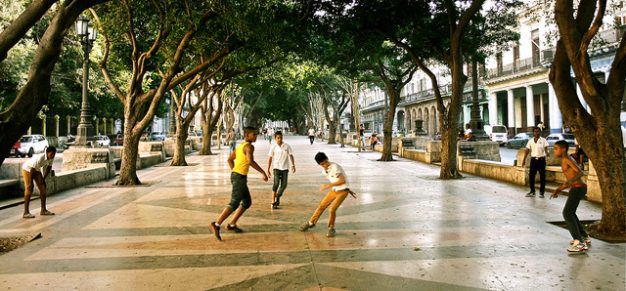
10 ways to build a city for children
The Vancouver-based urbanist, Jillian Glover, an advisor to the Canadian government who runs the ‘This City Life’ blog-site, has identified the ten features that she believes are the key to building child-friendly cities. Suggesting that, with the right kind of planning ‘cities can provide children with a more active lifestyle, access to great amenities, reduced energy and goods consumption, exposure to diversity and better family connections’ she then lists her ‘ten ways to build a city for children’:
Ten features
1.) Density – The benefits of city life for families, such as walkability, more free time and access to public transit and services, would not be possible without living in compact homes. This does not just mean high rise towers. It means providing a whole range of compact forms like town homes, laneway homes, duplexes, low-rise apartments and more.
2.) Family–oriented housing – We can’t just have density, we need homes designed to meet the needs of families, particularly homes with three bedrooms that are in family-friendly neighbourhoods with parks and amenities nearby.
3.) Access to schools and childcare – This is key. Parents cannot raise a child in the city without having nearby access – ideally walking distance – to good quality childcare, elementary and high schools.
4.) Access to public transport – It has been said that families need their cars to tote kids around from place to place, but many families are proving this is not true. Even Vancouver’s former Director of Planning Brent Toderian, who once said that “kids are the indicator species of a great neighborhood”, took his newborn son home from the hospital on public transit. Access to public transit is much easier when you live in a more compact, walkable community. If you do need a car, many cities now have car-sharing, allowing families to access one when necessary.
5.) Walkability – This is not just a matter of being able to walk where you need to go. Walkability means crosswalks, paved sidewalks and nice things like tree-lined streets. You’d be surprised at how many cities don’t provide sidewalks – even when something is within walking distance.
6.) Bike-ability – The greatest joy for a child is riding a bike. It teaches them independence and it’s just plain fun. For many urban families, it is a primary main mode of transport. Cities need to do their part to make it safe and plentiful.
7.) Access to nature – The irony of living in the suburbs is that many people live there to get closer to nature, yet they end of destroying it in the process. Children and even their parents, need access to nature. We know the benefits it has on physical and mental health. Every family should be able to access a park within 5 -10 minutes walking distance.
8.) Access to amenities – Parents in cities say that one of the greatest benefits of city life is easier access to amenities like community centres, libraries, public pools, movie theatres, and playgrounds. The best way for cities to attract families is by providing an abundance and diversity of amenities that appeal to children and don’t require car transport.
9.) Public safety – When I think back to my childhood, it is hard to believe how much more sheltered children are today. Maybe it is because back then there were more eyes on the street and stronger community connections, but many parents are afraid of letting their kids be unsupervised in their neighbourhood.
10.) Fun and whimsy – Children can find magic in almost any every day object. To aid their curious minds, cities can add many things to inspire the inner child in all of us, like water parks, swings, rainbow cross walks, street art and fun, creative public spaces like the one installed every year at Robson Square.
But how does this list compare to a children’s rights approach to the child-friendly city? Read her full blog here
Photo by Jaume Escofet (www.flickr.com/photos/jaumescar/8477826852/)




